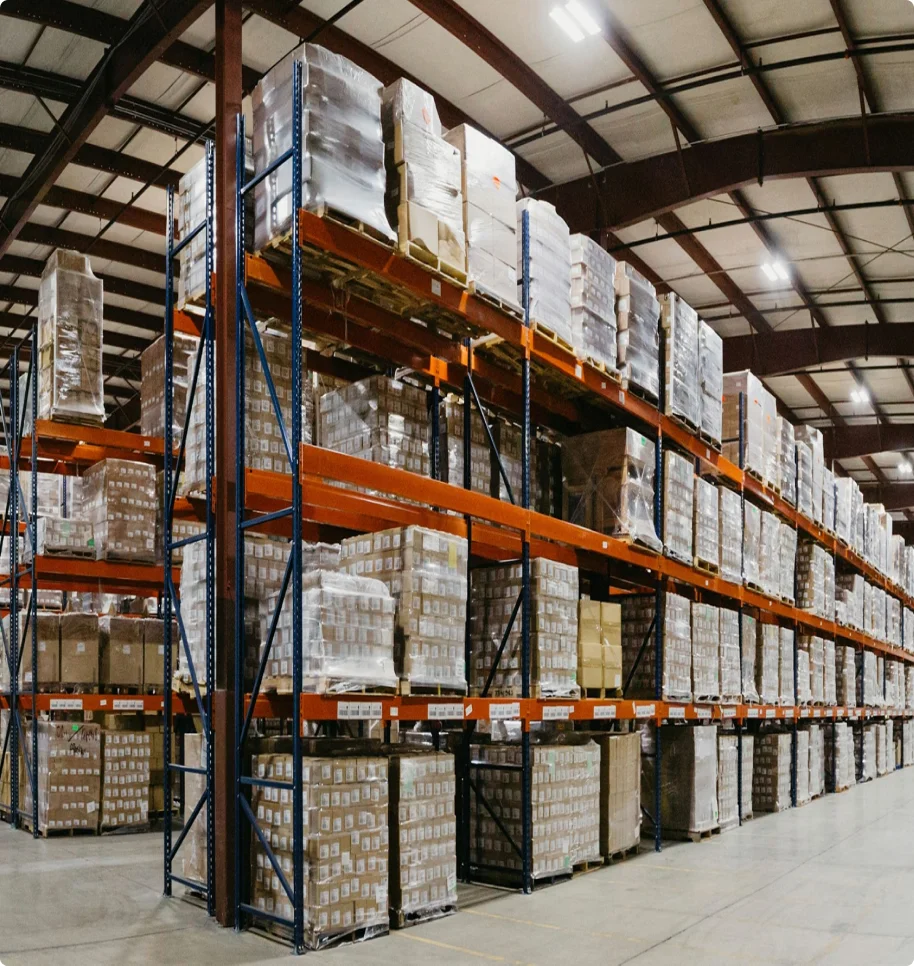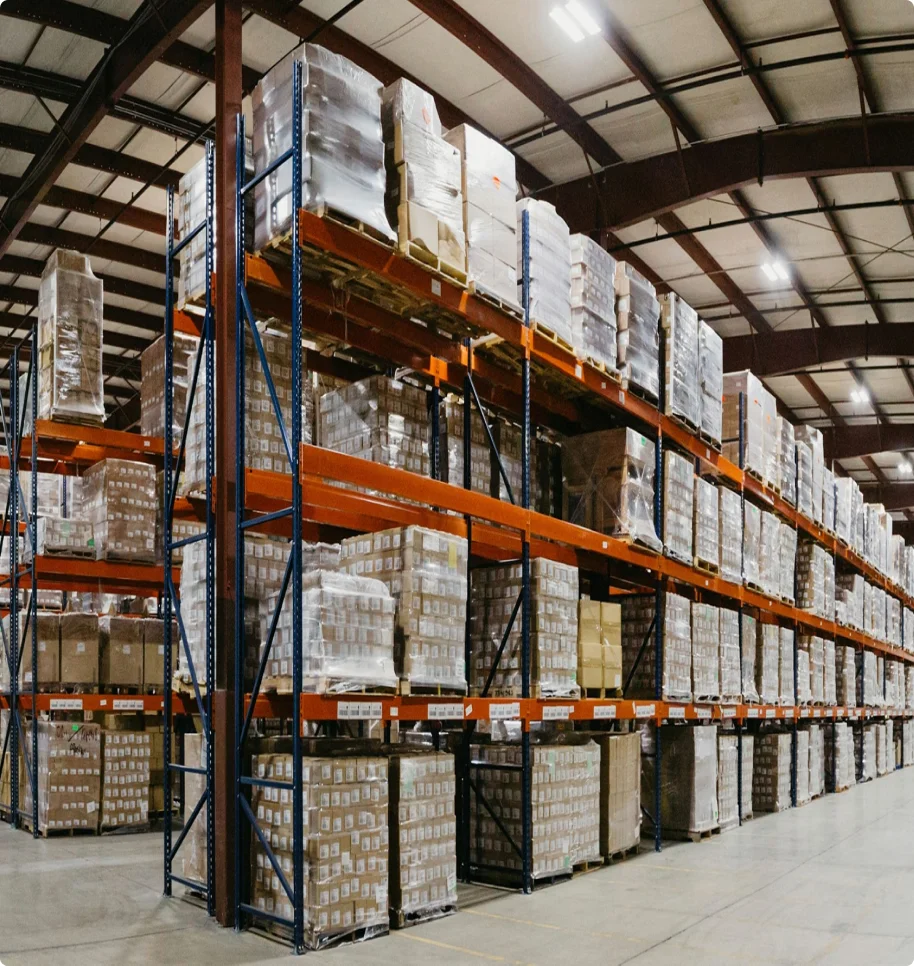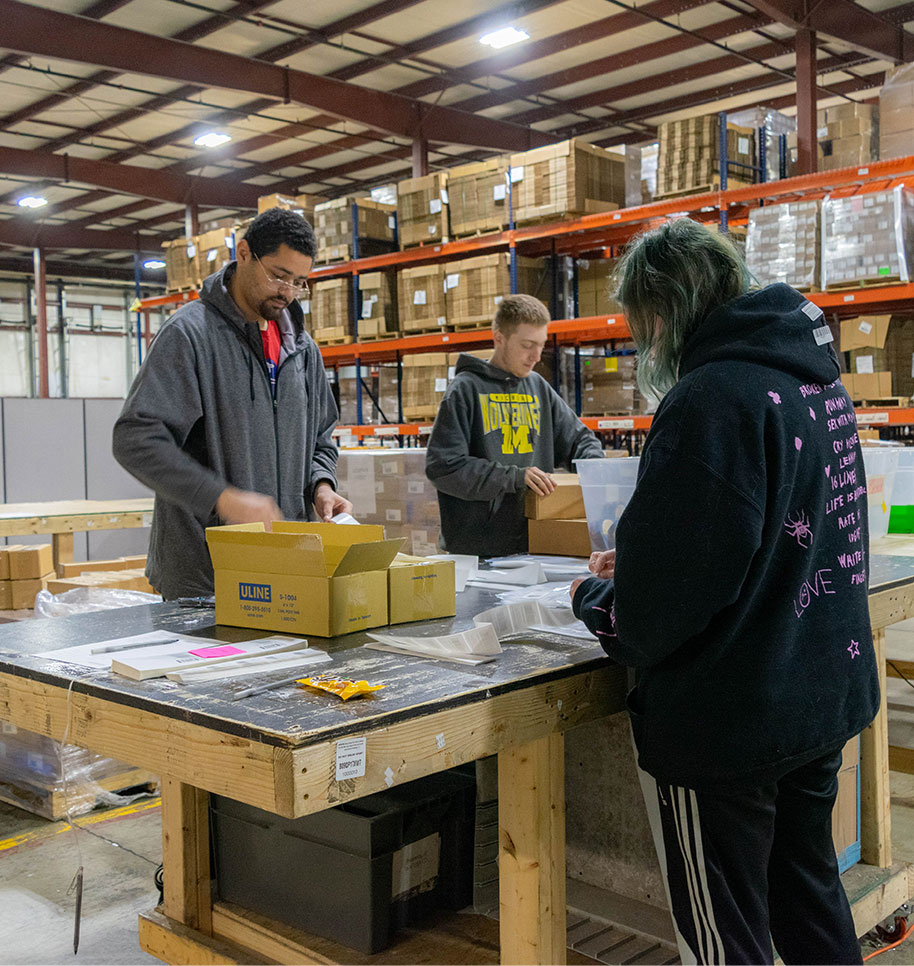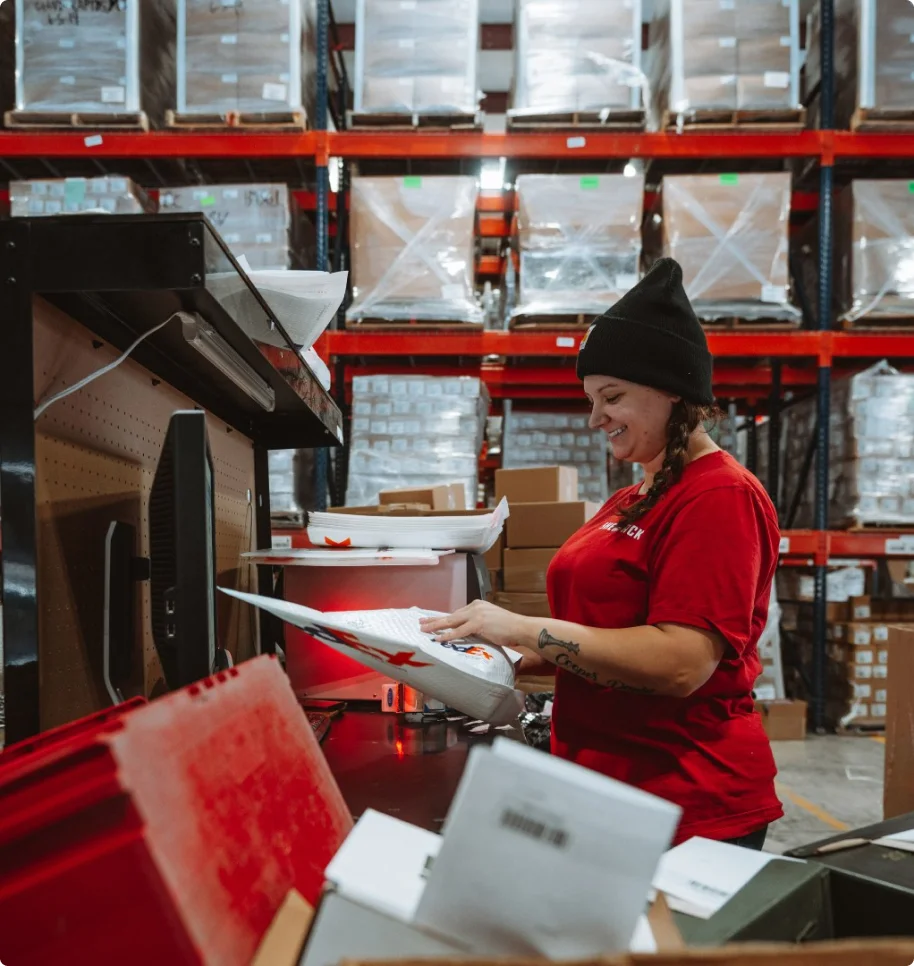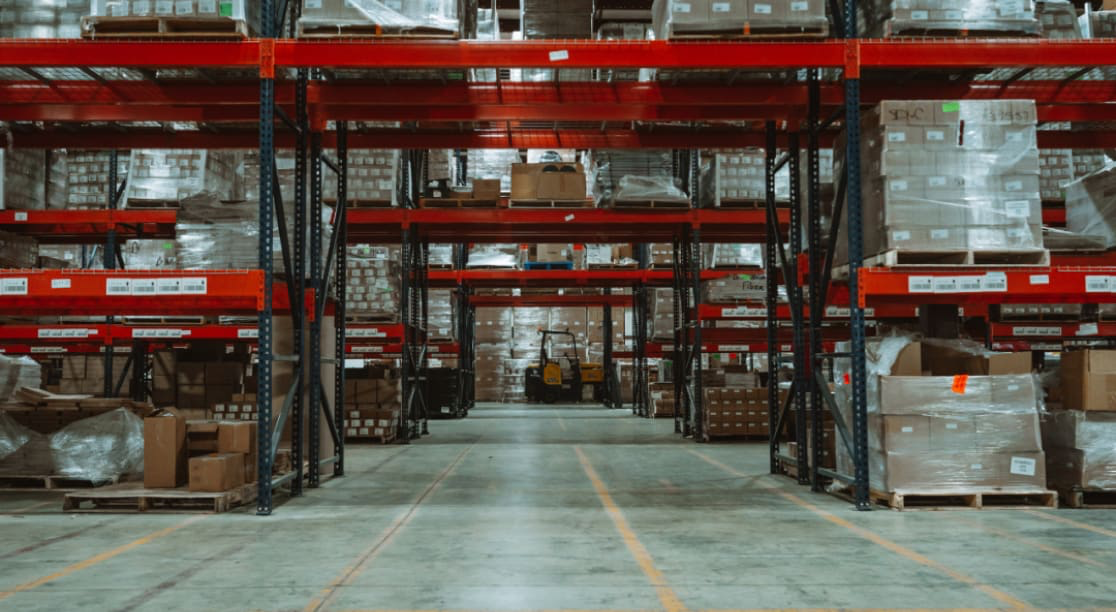While “automation” remains a buzzword for all kinds of business improvements, automated shipping has a very specific meaning for companies that are expanding into new shipping solutions: It refers to technology and services that automatically take care of the picking, packing, and shipment tasks the moment that an order is placed.
Fulfillment centers like Sherpack offer automated shipping for these kinds of e-commerce to growing businesses. We’ll dive into specifics on how that works, but first let’s talk about the biggest advantages of going full automation for your shipping needs.
4 Advantages of Automated Shipping
1. Your Supply Chain Gains New Features and Data
Shipping automation is about implementing the right technology from your e-commerce platform to your inventory and storage processes and beyond. If your business hasn’t yet implemented much software in these areas, then the switch to automation comes with some very significant upgrades for increasing accuracy and improving analytics. That includes bonuses like:
- More order tracking: Automation allows businesses to track when orders are made, when products are picked, when they’re ready for shipment, and the moment they’re out the door…as well as where they are on the road and if anything has gone wrong with the delivery.
- Accurate inventory management: One of the biggest benefits for automated inventory is that inventory is immediately updated when an order is placed, and alerts or recommendations are instantly sent out if it looks like inventory is running low or there is an order issue.
- Data for logistics decisions: Automation also provides much more data about when products are ordered, how frequently they’re ordered, and how successful current shipping practices are. This is excellent information for making decisions about logistics for the future and reacting to shifting customer trends.
2. Shipping Becomes Faster and More Accurate
Without automation, packaging and shipping take time, especially for a growing business that’s feeling a little overwhelmed with the level of new orders. That time is both a delay in shipping for the customer and a drain on resources.
Automation can provide solutions like automatic label printing, barcodes, third-party packaging services, and similar ways to take time out of the shipping process. Everything becomes faster, customers get shipments and updates sooner, and your company’s team has more bandwidth for other tasks. That leads to the next big advantage…
3. Businesses Save More Money
With software, technology, and third-party services powering your shipping process, your business has more labor hours to spend on…well, more important things. Is a talented team member’s time better served with order fulfillment, or taking a call from a loyal client?
This means that even though the number of hours that an employee may work stays the same, the value of those labor hours can drastically increase because they can start handling more specialized tasks. With the right services or plans, companies may also be able to save money outright compared to older methods. That’s especially important for small businesses entering new growth phases!
4. Future Growth Decisions Become Easier
The more automation, the more a company can focus on its core, the key set of offerings that really make the brand stand apart. Team leaders don’t have to worry about making sure that enough people are assigned to picking inventory or printing out labels to meet the latest order deadlines, and owners don’t have to keep factoring in new hires for growing inventory tasks.
As a result, companies are free to make hires and organizational decisions with a greater focus on staying competitive and being true to their brand, rather than constantly factoring in shipping labor.
How to Successfully Start Automating E-Commerce
Automated shipping can sound intimidating to companies that are still used to self-fulfillment. Fortunately, today’s software tools make upgrading to automation a much simpler process, especially for companies that already have an online store. Here are a few key steps.
Integrate E-commerce with Other Shipping Processes
Start with your online ordering process – after all, that’s where buyers hand everything off to you! Use platforms that allow you to integrate your shopping cart with inventory management systems and shipment tracking so that each shipping step can be automated and managed from a central hub.
Fortunately, major carts and platforms tend to support ready integration with inventory and shipping, from Square and Shopify to PayPal and Magento. Fulfillment centers like Sherpack can also help build out more specific integrations with carts, too.
Improve Your Inventory Management System
“Wait,” you may be saying, “Our inventory system works fine, but I’m not sure if it’s ready to integrate with orders and shipping on a software level.” That’s why this is also a great point to upgrade to a software-focused inventory management system that makes product-tracking nearly effortless. There are lots of systems to choose from, for businesses of all sizes, with many different setups and interfaces depending on your current activity. Good choices will have excellent scalability for future growth, a simpler interface for training new employees, and customizable alerts for inventory shortages and re-ordering.
You can also choose to align with a third-party fulfillment center that can integrate its own software solutions, store and handle inventory, and upgrade your tracking without needing to handle everything in-house. This does require arranging to have inventory managed offsite, which can be a significant change for some growing companies.
Set Key Action Points
Automation works best when it’s customized to begin tasks for specific situations, or action points. The example we just gave above about inventory sending a re-order alert is an excellent example of an action point software can act on. This also helps companies plan for appropriate inventory levels without spending too much on storage or running into frequent shortages.
Other important action points can send notifications to customers about shipments, automatically choose the right packaging, and more.
Use Shipment Tracking Updates
Using shipping solutions that allow for accurate updates right to your computer or app – and if possible, integrate with the other automation software you are using. Integrated shipping also allows you to automate email updates to customers about when orders are out for delivery and other important status changes.
Finally, here’s more good news: Sherpack can help provide all of the above with our services and integration! Contact us today to talk about your specific company situation, and the automation that can provide for your shipping.

